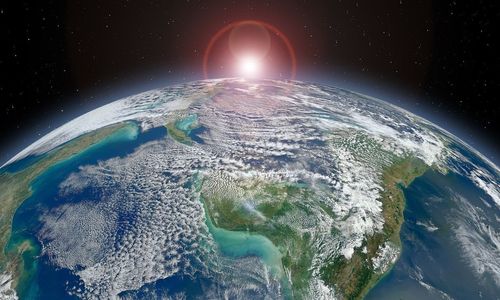A “Why do some species die and some live? The answer was clear: on the whole the best fitted lived. From the effects of disease, the healthiest escaped; from enemies, the strongest, the swiftest or the most cunning; from famine, the best hunter… This self-acting process would improve the race, because in every generation the inferior would inevitably be killed off and the superior would remain, that is, the fittest would survive." It is a reflection written by Alfred Russel Wallace in 1858 that framed a theory of the evolutionary origin of species.
B Quite independent of each other, Charles Darwin and his young contemporary Wallace reached the same conclusion on natural selection. Their conclusions, however, had been the direct result of their personal observation of animals and plants in widely separated geographic locations. Darwin attributed to his experiences during the voyage of the Beagle, and particularly during the ship's visit to the Galapagos Islands in the East Pacific in 1835. And Wallace attributed to his years of travel in the Amazon Basin and in the Indonesia-Australian Archipelago in the 1850s.
C Darwin had already been recording his ideas on evolution for years when he received a note from Wallace who solicited his opinion on the same subject and requested his assistance to get a paper on the subject published. In July 1858, Darwin's close friends Charles Lyell and J. D Hooker, strongly encouraged Darwin to present his conclusions immediately so that he would not lose priority to an unknown naturalist. Presiding over the hastily called but now historic meeting of the Linnean Society of London, the world's oldest active biological society, Lyell and Hooker explained to the distinguished members how ‘these two gentlemen’ had ‘independently and unknown to one another, conceived the same very ingenious theory.’
D Both Darwin and Wallace had realized that the anomalous distribution of species in particular regions had profound evolutionary significance. As a result of his correspondence with Wallace and his conversations with Lyell and Hooker, Darwin opted to sequester himself in near seclusion, where he spent his remaining days studying and writing about the origin of the species. Wallace, on the other hand, applied himself to the science of biogeography, the study of the pattern and distribution of species, and its significance.
E For Wallace, years of hard work resulted in a detailed record of zoological observations and a huge collection of specimens which he sold to museums and collectors. Among the conclusions in his findings was Wallace's contention that there is a distinct faunal boundary (called Wallace's Line) between the Asian kingdom of animals in Java, Borneo, and the Philippines and the Australian kingdom of animals in New Guinea and Australia. Despite all of his studies and conclusions, Wallace remained uncertain as to how plants and animals that had originated in the Northern Hemisphere could have met with their Southern Hemisphere counterparts along such a predominant Malaysian zone of demarcation.
F After reading Geographical Distribution of Animals by Wallace, Alfred Wegener, a German polar researcher and geophysicist, cited the three clear divisions of Australian animals to support his own theory of continental displacement. Interestingly, Wallace had discovered that animal species that had established themselves in southwestern Australia had a resemblance in structure to animals in South Africa, Madagascar, but had no affinity with animal species in Asia. Wallace was also able to document that Australian marsupials and monotremes were clearly linked to species in South America, the Moluccas, and various Pacific islands, and, curiously, no links were found to species in nearby Indonesia. From this and related data, Wegener concluded that the broadly accepted 'land bridge' theory could not account for this distribution of animals and that only his theory of 'continental drift' could explain it.
G The theory that Wegener dismissed in preference to his own proposed that plants and animals had once migrated across now-submerged intercontinental land connections. In 1885, one of Europe’s leading geologists, Eduard Seuss, theorized that as the rigid Earth cools, its upper crust shrinks and wrinkles like the withering skin of an aging apple. Seuss suggested that the planet's seas and oceans now fill the wrinkles between once-contiguous plateaus.
H Although many zoogeographers no longer consider the Wallace Line to be a regional boundary, it does represent an abrupt limit of distribution for many major animal groups. Various fish, bird, and mammal groups which are abundant on one side of the Wallace Line are either absent or poorly represented on the other side. Today, we know that we live on a dynamic Earth with shifting, colliding and separating tectonic plates, not a 'withering skin', and the main debate in the field of biogeography has changed to centre around 'dispersalism' versus 'vicarianism', or in other terms, unrestricted radiation of species on the one hand and the development of barriers to migration on the other. Dispersion usually will see a proportion of the ancestral population actively move across a geographic barrier to form a similar species which later transformed into a new species. However, the process of vicariance is more passive as the original species was divided reluctantly by a geographical barrier. Years later, both species may go through a series of evolution and results in new species.
